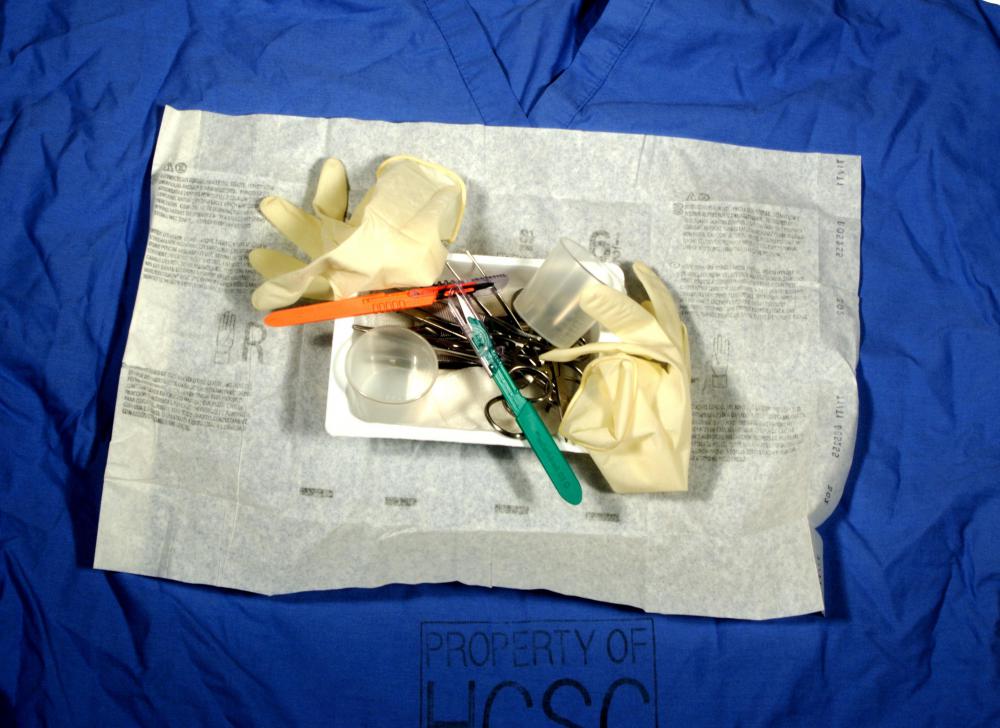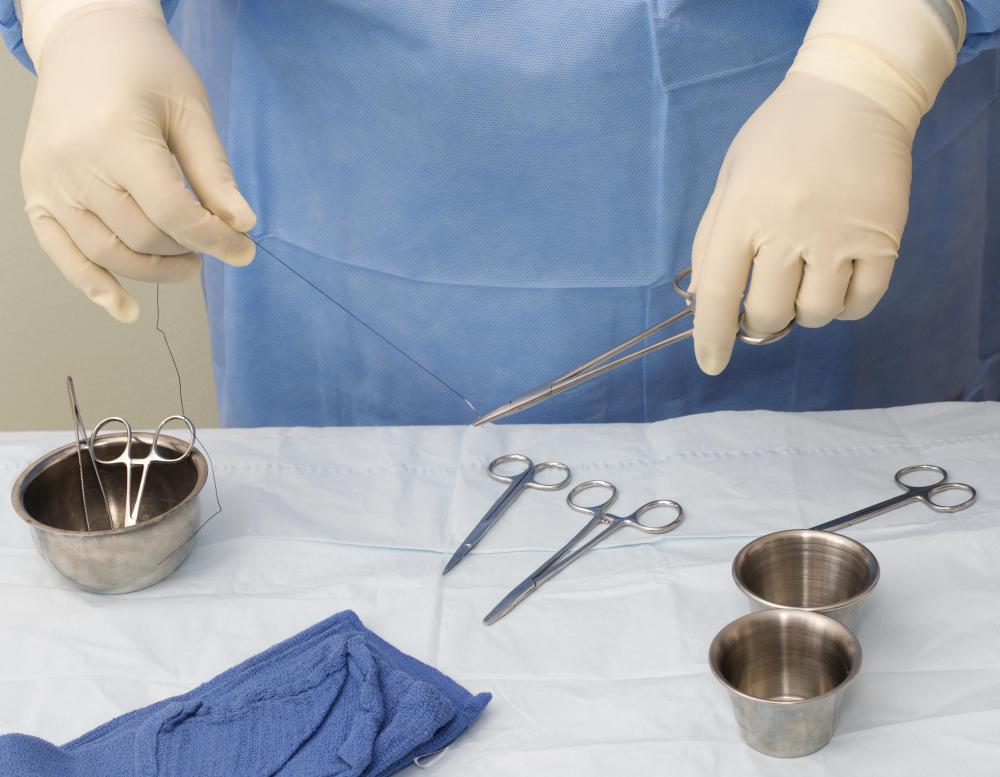At WiseGEEK, we're committed to delivering accurate, trustworthy information. Our expert-authored content is rigorously fact-checked and sourced from credible authorities. Discover how we uphold the highest standards in providing you with reliable knowledge.
What Is a Vertical Mattress Stitch?
A vertical mattress stitch is one of the surgical sutures performed for large and deep wounds. It is especially effective in cases where the skin around the edges cannot easily be everted, or turned inside out, and the wound cannot close properly. Thus, it prevents wounds from healing in an inverted and sunken manner and from acquiring any infection from exposure. It is also common to use this type of stitch to close incisions from where large tissues or tumors are surgically removed, such as in cases of biopsies or cancer operations.
The term “vertical mattress stitch” is more probably in reference to the wound and not to the stitch itself, as it is often performed in vertical or upright wounds. The suture technique, however, is actually a series of little horizontal stitches performed across the wound. Not only does this approach close wounds well, but it also helps reduce tension, preventing the wound from further stretching.

The process of performing a vertical mattress stitch can be described as “far-far-near-near” or “deep-deep-shallow-shallow." The first step is to insert the needle and thread in the skin from one side of the wound, usually around .15 to .30 inches (4 to 8 mm) away from the wound. The next step is to pass the needle and thread underneath the skin until they emerge on the other side, having the same distance from the wound as the initial “bite.” These two far and deep bites ensure that the deeper tissues underneath the skin will bind together and heal properly.

In contrast, the near and shallow bites are for the epidermis, preventing the layer from healing inwards. For these bites, the needle and thread are inserted from the skin surface on the same side as the previous deep bite. This time, the distance from the wound should be around .03 to .07 inches (1 to 2 mm) away from the wound. The needle and thread exit on the other side, and the surgeon performs a knot to secure the suture. It is important that the knot is neither too loose nor too tight; the wound may not close properly if the knot is too loose, and the wound may form a raised scar if the knot is too tight.

As stated by the American Academy of Family Physicians (AAFP), the vertical mattress stitch is one of the most effective suture techniques that promote excellent skin eversion, both for the superficial and deeper layers of the skin and tissue. It is often performed on the back of the neck, the palm, or any area that is concave. One disadvantage of the vertical mattress stitch, however, is the large probability of producing “railroad” scars along both sides of the wound, as the deep bites dig into the deeper tissue layers. For this reason, this suture stitch is not usually performed on the face.
AS FEATURED ON:
AS FEATURED ON:















Discuss this Article
Post your comments